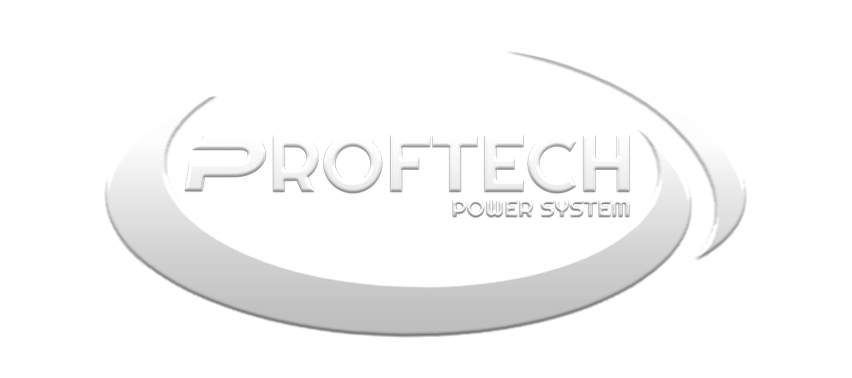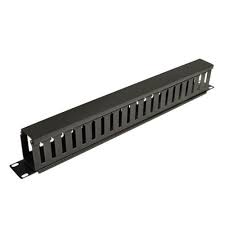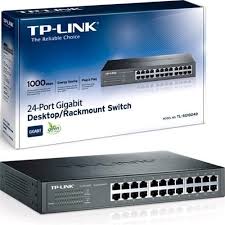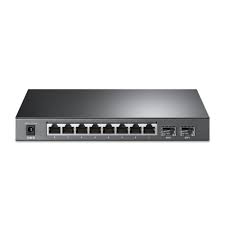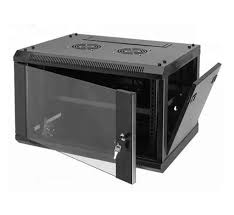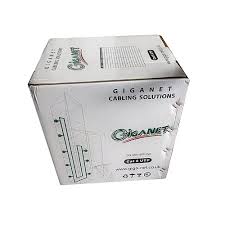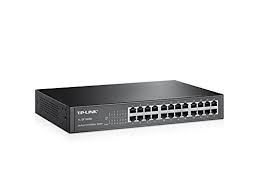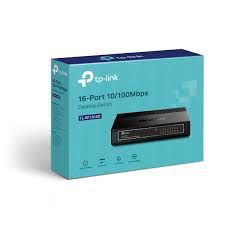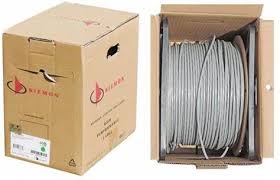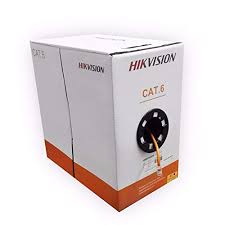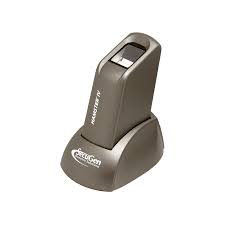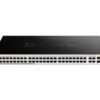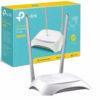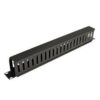1U Management Panel Network Cable Manager
1U Management Panel Network Cable Manager provides essential cable organization and management for professional network rack installations, ensuring optimal airflow, simplified maintenance, and professional appearance in data centers and telecommunications environments. This space-efficient solution maximizes cable routing capability while occupying minimal rack space in high-density equipment installations.
Technical Specifications and Construction Details
The 1U Management Panel Network Cable Manager incorporates robust construction designed for demanding rack environment applications:
- Rack Height: 1U (1.75 inches) standard 19-inch rack mounting configuration
- Panel Width: 19 inches (482.6mm) for standard rack compatibility
- Panel Depth: 6 inches (152mm) providing adequate cable routing space
- Cable Capacity: Accommodates up to 48 Cat 6 cables or equivalent cable bundle volume
- Material Construction: Cold-rolled steel with powder-coated finish for durability
- Cable Management: Multiple horizontal and vertical cable routing paths
- Mounting Hardware: Standard rack mount ears with #10-32 cage nuts and screws
- Cable Entry Points: Front and rear cable access with rounded edges for cable protection
- Bend Radius Protection: Integrated cable guides maintain proper bend radius specifications
- Weight Capacity: 25 pounds distributed load rating for cable bundles and accessories
- Operating Temperature: -10°C to +60°C for diverse rack environment conditions
- Finish Options: Black powder coat with optional gray finish for aesthetic coordination
The modular design enables flexible cable routing configurations while the robust construction withstands repeated cable installation and modification procedures.
Cable Management Features and Routing Capabilities
Advanced Cable Organization Systems
The 1U Management Panel Network Cable Manager incorporates multiple organizational features for professional installations:
Horizontal Cable Trays: Integrated cable trays provide organized pathways for horizontal cable runs between rack equipment and patch panels, maintaining proper separation and accessibility.
Vertical Cable Guides: Side-mounted cable management features enable clean vertical cable routing to adjacent rack units while maintaining proper bend radius requirements.
Cable Retention Systems: Velcro straps and cable ties secure cable bundles preventing movement and maintaining organized appearance during equipment access and maintenance.
Adjustable Dividers: Removable partition elements enable customization of cable routing sections based on specific installation requirements and cable types.
Professional Installation Benefits
Systematic cable management provides operational advantages:
Airflow Optimization: Organized cable routing prevents obstruction of equipment cooling airflow, improving thermal management and equipment reliability in high-density installations.
Maintenance Accessibility: Clear cable organization enables rapid identification and access to specific circuits during troubleshooting and maintenance procedures.
Documentation Support: Organized cable routing facilitates accurate cable labeling and documentation for efficient network management and change procedures.
Scalability Planning: Modular design accommodates future cable additions and modifications without requiring complete reorganization of existing installations.
Professional Installation Procedures
Rack Mounting and Positioning Guidelines
Proper installation of the 1U Management Panel Network Cable Manager ensures optimal functionality:
Strategic Placement: Install management panels between active equipment and patch panels to provide cable organization without interfering with equipment access or airflow patterns.
Mounting Sequence: Install management panels before cable termination to enable proper cable routing during initial installation and prevent cable stress during panel installation.
Clearance Requirements: Maintain adequate clearance above and below management panels for cable access and future equipment installation without cable interference.
Load Distribution: Consider cable weight distribution across multiple management panels in high-density installations to prevent excessive loading on individual rack rails.
Cable Routing Best Practices
Professional cable installation techniques maximize management panel effectiveness:
Cable Preparation: Plan cable lengths and routing paths before installation to minimize excess cable and optimize management panel utilization efficiency.
Bend Radius Compliance: Maintain manufacturer-specified minimum bend radius for all cable types using management panel guides and avoiding sharp corners or excessive tension.
Cable Segregation: Separate power and data cables using different routing sections to minimize electromagnetic interference and maintain signal integrity.
Service Loop Management: Provide appropriate service loops for future equipment changes while preventing excess cable accumulation that could obstruct airflow or access.
System Integration and Compatibility
Rack System Coordination
The 1U Management Panel Network Cable Manager integrates seamlessly with standard rack infrastructure:
Standard Rack Compatibility: 19-inch rack mounting ensures compatibility with all standard telecommunications and data center rack systems from major manufacturers.
Equipment Coordination: Design coordinates with patch panels, switches, servers, and other rack-mounted equipment for integrated cable management solutions.
Cable Pathway Integration: Coordinated design with ladder racks, overhead cable trays, and under-floor cable distribution systems for complete facility cable management.
Modular Expansion: Multiple panels can be installed throughout rack systems to provide comprehensive cable management without compromising equipment density.
Network Infrastructure Applications
Professional network installations benefit from systematic cable management:
Data Center Environments: High-density server and network equipment installations require organized cable management for operational efficiency and thermal management.
Telecommunications Facilities: Carrier and service provider installations utilize management panels for organized cable distribution and simplified maintenance procedures.
Enterprise Network Rooms: Corporate network infrastructure benefits from professional cable organization for reliable operation and efficient troubleshooting.
Industrial Control Systems: Manufacturing and process control network installations require robust cable management for reliable operation in demanding environments.
Operational Benefits and Performance Advantages
Thermal Management Enhancement
Organized cable management significantly improves rack thermal performance:
Airflow Optimization: Proper cable routing prevents blockage of equipment intake and exhaust airflow, improving cooling efficiency and reducing energy consumption.
Hot Spot Prevention: Organized cables eliminate localized airflow restrictions that could create thermal hot spots affecting equipment reliability and performance.
Cooling System Efficiency: Improved airflow distribution enables more efficient operation of facility cooling systems and reduces overall energy costs.
Equipment Life Extension: Optimal thermal conditions extend equipment service life and reduce premature failure rates in high-density installations.
Maintenance and Operational Efficiency
Professional cable management provides significant operational advantages:
Troubleshooting Speed: Organized cable layout enables rapid circuit identification and tracing during network troubleshooting and fault isolation procedures.
Change Management: Systematic cable organization simplifies network modifications, equipment upgrades, and circuit additions without disrupting existing installations.
Documentation Accuracy: Clear cable routing supports accurate network documentation and labeling systems essential for efficient facility management.
Safety Improvement: Organized cables reduce trip hazards, eliminate cable stress points, and improve overall workplace safety in equipment areas.
Quality Standards and Compliance
Industry Standards and Certifications
The 1U Management Panel Network Cable Manager meets relevant industry requirements:
EIA/TIA Standards: Compliance with telecommunications industry association standards for rack-mounted equipment and cable management systems.
ANSI/EIA-310-D: Adherence to rack mounting standards ensuring compatibility with standard 19-inch rack systems and mounting hardware.
UL Listing: Safety certification for electrical equipment installation environments ensuring compliance with fire safety and electrical safety requirements.
RoHS Compliance: Environmental compliance with restrictions on hazardous substances for responsible manufacturing and disposal practices.
Manufacturing Quality Control
Production quality assurance ensures consistent performance:
Material Testing: Steel composition and coating quality testing ensures durability and corrosion resistance in typical installation environments.
Dimensional Accuracy: Precision manufacturing maintains tight tolerances for proper rack fit and alignment with standard mounting hardware.
Load Testing: Structural testing verifies weight capacity ratings and ensures reliable performance under typical cable loading conditions.
Finish Quality: Coating adhesion and durability testing ensures long-term appearance and protection against environmental exposure.
Cost Analysis and Economic Benefits
Total Cost of Ownership Assessment
Investment analysis of the 1U Management Panel Network Cable Manager implementation:
- Installation Efficiency: Organized cable management reduces installation time and labor costs for network infrastructure projects
- Maintenance Savings: Simplified troubleshooting and modification procedures reduce ongoing operational costs and service time requirements
- Equipment Protection: Improved thermal management and reduced cable stress extend equipment life and reduce replacement costs
- Energy Efficiency: Optimized airflow reduces cooling energy consumption and associated operational expenses
Return on Investment Considerations
Value proposition analysis for professional installations:
Labor Cost Reduction: Organized cable management significantly reduces time required for network changes, troubleshooting, and maintenance procedures.
Equipment Reliability: Improved thermal management and reduced cable stress contribute to higher equipment reliability and reduced downtime costs.
Operational Efficiency: Professional cable organization enables faster response to network issues and improved overall facility management efficiency.
Facility Standardization: Consistent cable management approach across facility enables standardized procedures and reduced training requirements for technical staff.
Installation Planning and Design Considerations
Capacity Planning and Sizing
Proper planning ensures optimal management panel utilization:
Cable Count Assessment: Evaluate current and future cable requirements to determine appropriate number and placement of management panels throughout rack installations.
Cable Type Consideration: Account for different cable types and diameters when planning management panel capacity and routing configurations.
Growth Planning: Plan for future network expansion and cable additions without requiring complete reorganization of existing cable management infrastructure.
Integration Coordination: Coordinate management panel placement with patch panel locations, equipment installation, and facility cable pathway systems.
Environmental Considerations
Installation environment factors affect management panel performance:
Temperature Monitoring: Verify rack environment temperature remains within specified operating ranges for management panel materials and cable types.
Humidity Control: Maintain appropriate humidity levels to prevent corrosion and ensure long-term reliability of metal components and cable connections.
Vibration Assessment: Consider facility vibration sources that could affect cable connections and implement appropriate securing methods for high-vibration environments.
Access Requirements: Plan management panel placement to maintain adequate access for installation, maintenance, and future modifications without equipment removal.
Technical Support and Documentation
Professional Installation Resources
Comprehensive support ensures successful deployment:
Installation Guidelines: Detailed installation documentation provides step-by-step procedures for proper mounting and cable routing techniques.
Best Practices Documentation: Professional installation recommendations based on industry standards and field experience for optimal results.
Compatibility Information: Detailed compatibility specifications for integration with various rack systems and equipment types.
Technical Specifications: Complete technical documentation including load ratings, dimensional data, and environmental specifications for design planning.
Warranty and Service Support
Professional warranty structure supports commercial applications:
Product Warranty: Comprehensive warranty coverage against manufacturing defects and material failures under normal operating conditions.
Technical Support: Application engineering support for complex installations and integration requirements with existing infrastructure.
Replacement Parts: Available replacement components and accessories for long-term maintenance and system modifications.
Field Service: Authorized installation and service provider network for professional installation assistance and ongoing support requirements.
The 1U Management Panel Network Cable Manager delivers professional-grade cable organization for rack-mounted network infrastructure, providing essential cable management capabilities while optimizing airflow, simplifying maintenance, and maintaining professional appearance in demanding data center and telecommunications environments.
